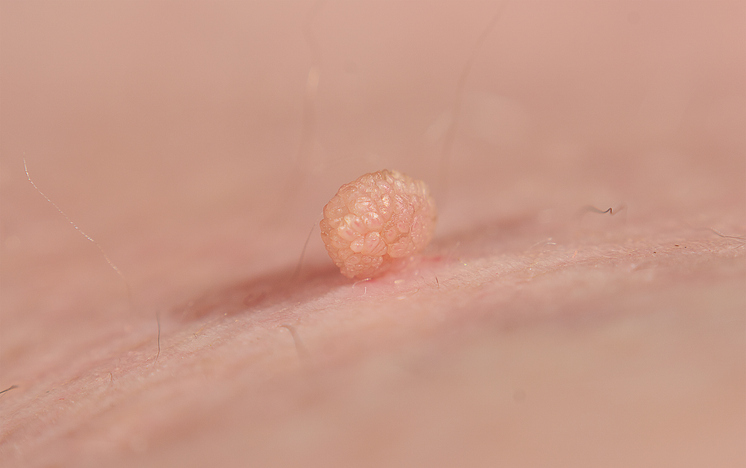Anal skin tags, also known as perianal skin tags, are harmless growths that can occur near the anus. While they are usually innocuous and non-cancerous, they can create discomfort and concern in those who get them. This is where anal tag removal comes into play.
In this blog, we will go into further detail about anal skin tags, including their causes, removal procedures, recovery time, and other relevant facts.

What are Anal Skin Tags?
Anal skin tags, also known as perianal skin tags, are small, harmless growths that appear near the anus. These tags are typically made of excess skin and tissue and hang from the surrounding skin. They are typically flesh-colored or slightly darker in color, and can range in size from a few millimeters to a few centimeters.
Anal skin tags are generally non-cancerous and non-harmful. They do not, on their own, pose any significant medical risks or complications. They can, however, cause discomfort, itching, and hygiene issues for some people, prompting them to consider removal.
These skin tags can appear alone or in groups, and they are more common in adults than in children. While anal skin tags can occur in anyone, certain factors may increase the likelihood of their formation, including:
Hemorrhoids: Anal skin tags can be caused by swollen blood vessels in the anal or rectal area, which can be caused by hemorrhoids. They can occur as a result of bowel straining, chronic constipation, pregnancy, or obesity.
Chronic anal fissures, which are small tears or cracks in the skin of the anus, can result in the formation of anal skin tags. Factors such as excessive straining, hard stools, or diarrhea can cause these fissures.
Pregnancy and Childbirth: Hormonal changes during pregnancy, as well as pressure on the pelvic area during childbirth, can increase the likelihood of anal skin tags developing.
Excessive Rubbing, Scratching, or Irritation of the Anal Area: Frequent rubbing, scratching, or irritation of the anal area can promote the formation of skin tags. Poor hygiene, obesity, excessive cleansing, or the use of abrasive toiletries can all contribute to this irritation.
It’s important to understand that anal skin tags are not the same as hemorrhoids, even though they can appear as a result of hemorrhoidal conditions. Anal skin tags are excess skin growths, whereas hemorrhoids are swollen blood vessels.
Anal Skin Tag Removal
While anal skin tags are generally harmless, people may choose to have them removed for a variety of reasons, including discomfort, irritation, hygiene concerns, or cosmetic reasons. Anal skin tags can be removed using a variety of techniques. The technique used is determined by factors such as size, location, and individual preferences. It is critical to consult with a healthcare professional to determine the best removal method for your specific situation. Here are some common methods for removing anal skin tags:
Surgical Excision: Surgical excision is a common procedure for removing anal skin tags. It entails removing the skin tag with a scalpel or surgical scissors. The procedure is typically performed as an outpatient under local anesthesia. Before carefully removing the skin tag, the healthcare professional will cleanse the area and numb it with a local anesthetic. If necessary, sutures may be used to close the wound. Typically, the excised tissue is sent for pathological examination to rule out any underlying issues. Surgical excision is a popular method for removing larger or more complex anal skin tags.
Cryotherapy is the freezing of an anal skin tag with liquid nitrogen or another freezing agent. The freezing process kills the cells within the skin tag, causing it to fall off gradually over time. Cryotherapy is a non-invasive treatment that is generally well tolerated by patients. However, multiple treatment sessions may be required for complete removal, and there may be some discomfort during and after the procedure.
Ligation: Ligation is a common technique for removing small anal skin tags. It entails tightly wrapping a small, sterile band around the base of the skin tag. This stops the tag’s blood supply, causing it to wither and eventually fall off. Ligation is a relatively simple and low-risk procedure that can be done in the office of a healthcare professional. It may cause mild discomfort during the procedure, but no anesthesia is usually required. The time it takes for the skin tag to detach varies, but it usually takes one to two weeks.
Electrocautery is a procedure that uses an electrical current to burn and execute anal fissure skin tag removal. The healthcare professional will apply an electrical current to the base of the tag with a specialized instrument, causing it to be cauterized and separated from the surrounding tissue. When compared to surgical excision, electrocautery is typically performed under local anesthesia, and the healing time is usually shorter. It may, however, cause some post-procedure discomfort, and proper wound care is required to prevent infection
It is critical to note that anal skin tags should only be removed by a trained healthcare professional. Self-removal or attempting to remove the tags at home is not advised because complications such as bleeding, infection, or incomplete removal can occur.
Following the removal procedure, the healthcare professional will provide post-operative instructions, which may include keeping the area clean, avoiding strenuous activities, and taking prescribed pain medications, if necessary. It is critical to adhere to these instructions in order to promote proper healing and reduce the risk of complications.
Recovery Process
The recovery time after anal skin tag treatment varies depending on the method used and individual factors. Here are some general guidelines to help you get through the recovery process:
Pain Management: It is normal to feel some discomfort or mild pain after anal skin tag removal. To help manage any post-procedure pain, your healthcare professional may recommend over-the-counter pain relievers or prescribe medications. It is critical to follow the dosage and instructions for pain relief.
Maintaining good hygiene and proper wound care is critical for optimal healing and reducing the risk of infection. Here are some important steps to take:
- After each bowel movement, gently cleanse the treated area with warm water and mild soap. Avoid using harsh or scented soaps, which can irritate the skin.
- Using a soft, clean towel, gently pat the area dry. Rub or scratch the treated area as little as possible.
- Toilet paper with fragrances or rough textures should be avoided. Instead, for gentle cleaning, consider using unscented, moist wipes or a bidet.
- Unless specifically instructed by your healthcare professional, do not apply creams, lotions, or other topical products to the treated area.
Avoiding Straining: It is critical to avoid straining during bowel movements during the recovery period in order to promote healing and reduce the risk of complications. Straining can put pressure on the surgical site or treated area, which can result in pain, bleeding, or delayed healing. To avoid straining:
Consume more fiber by eating fruits, vegetables, whole grains, and legumes. Fiber can soften the stool and make bowel movements more comfortable.
Stay hydrated by drinking plenty of water throughout the day.
To prevent constipation, consider using stool softeners or mild laxatives as directed by your healthcare provider.
Follow-up Care: It is critical to schedule regular follow-up appointments with your healthcare professional in order to monitor the healing process and address any concerns or complications. They will examine the surgical site, remove any sutures that are needed, and advise on wound care and activities to avoid during the recovery period. Keep all scheduled follow-up appointments to ensure proper healing and to address any potential issues as soon as possible.
Healing Time: The healing time following anal skin tag removal varies depending on the method used and individual factors. In most cases, the wound will begin to heal within a few days to a week. Depending on the size and complexity of the removed skin tag, complete healing could take several weeks to a month. It is critical to be patient and give your body enough time to heal naturally.
It is critical to listen to your body during the recovery period and avoid activities that may strain or irritate the treated area. Avoid heavy lifting, strenuous exercise, and sexual activity until your healthcare professional gives you the all-clear.
Contact your healthcare professional right away if you experience severe pain, excessive bleeding, signs of infection (such as increased redness, swelling, or discharge), or any other concerning symptoms during your recovery.
Anal Skin Tag Removal Cost
The cost of anal skin tag removal varies depending on a number of factors, including the method used, geographical location, healthcare provider fees, and insurance coverage. Surgical excision typically costs $500 to $1,500, whereas non-surgical methods such as cryotherapy or ligation may be less expensive.
The cost of hemorrhoid skin tag removal and anus skin tag removal cost can vary depending on factors such as the chosen method and individual circumstances.
Contact the Anal Skin Tag Expert Today!
Ready to say goodbye to skin tags? Say hello to Dr. Kamrava, your go-to expert for skin tag removal. Experience personalized care and effective solutions that are tailored to your specific requirements. Today, reclaim your confidence and comfort. Make an appointment with Dr. Kamrava to begin your journey to a tag-free life.



